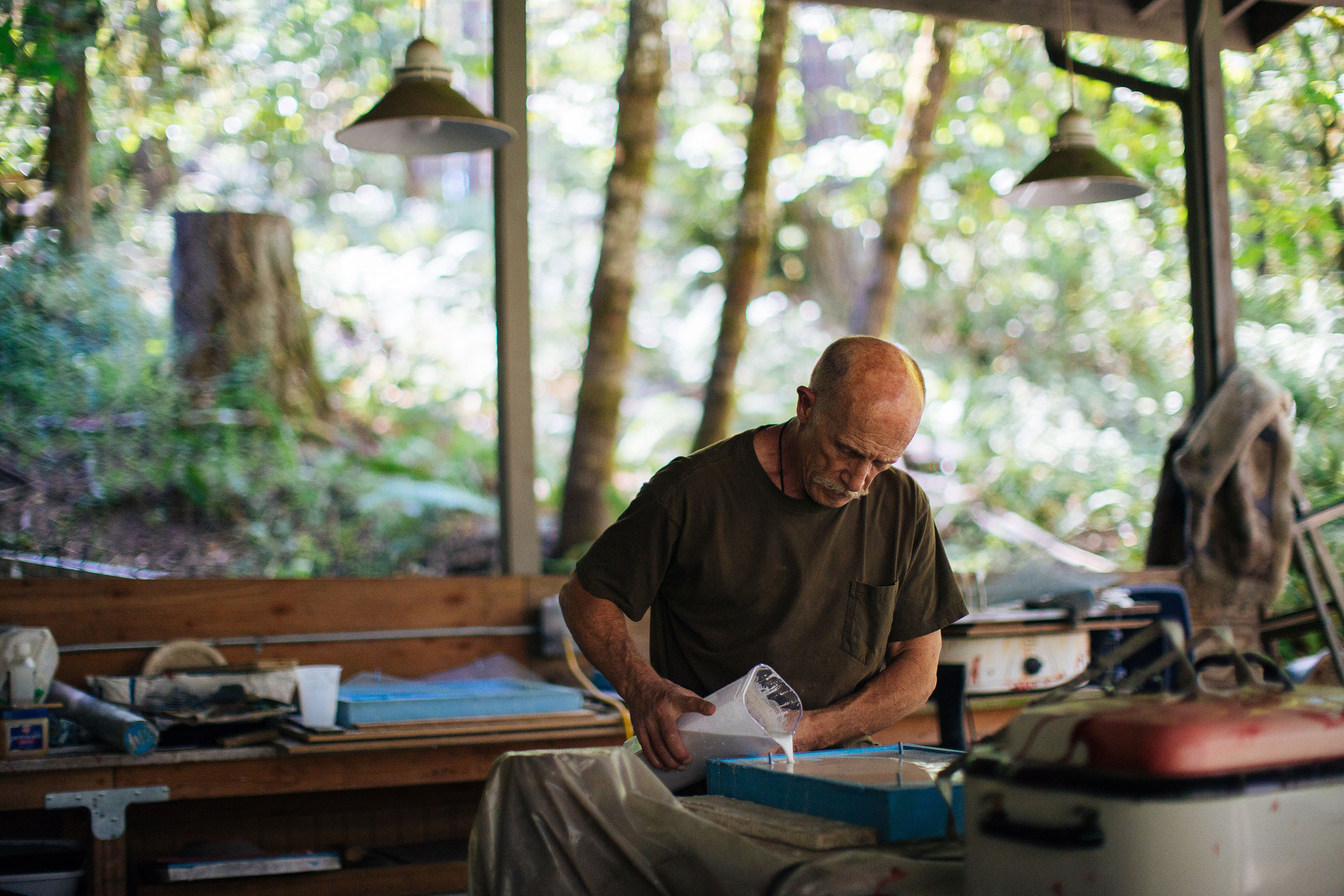Mike Leckie was lugging an armful of his hand-cast sculptures of athlete Ashton Eaton up the stairs at the 2012 Olympic Trials at Hayward Field when someone from above offered him a hand.
It was Eaton himself, the new world-champion decathlon runner. Oddly enough, Leckie was bringing the sculptures up the stairs as a gift to Eaton and his mother for the racer’s new 2012 world record.
“Ashton happens to be there. He says, ‘Oh, do you need help?’” Leckie recalls. “The world record holder in the decathlon comes down the stairs, carries cardboard boxes up with me — they are the nicest people in the world.”
Leckie can wildly gesture his way through story after story of working with competitors at the Olympic Trials because he’s sculpted athletes for the past three trails (2008, 2012 and 2016), selling his beautiful, white bas-relief sculptures at a booth at Hayward Field.
Enlarge
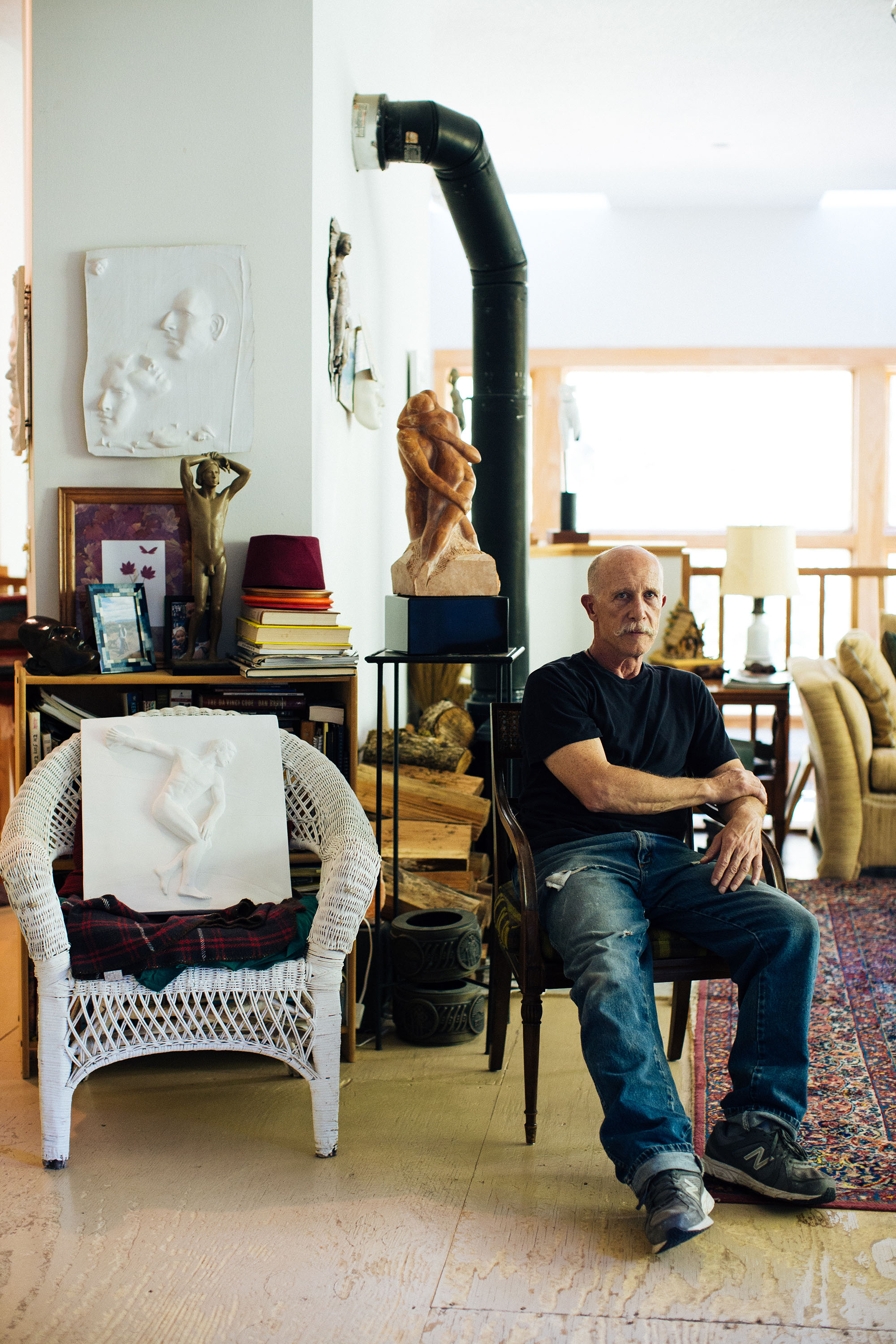
Photo by Todd Cooper
There’s the time in 2012 when he was sculpting a photo of world-record high jumper Jesse Williams and his, ahem, family jewels, captured just as the high-flying athlete bounced over the bar in his spankies. Leckie holds up the sculpture he made of Williams arching over the bar on the jump that earned him the world record that year.
“I called him and said, ‘Jesse, what do you want to do with this dick bump?” Leckie says. Williams responded: “You put a guy in spandex, that’s what you get.’”
A typical bas-relief sculpture at Leckie’s Olympic Trials booth measures 12 by 18 inches and is made of a white plaster-cementer substance called hydrostone.
Leckie hand-builds and hand-pours each sculpture at his home, reinforcing the somewhat fragile hydrostone with a grid of wire that is sunken into the plaster while wet.
The studio is still spotted with castings of Olympic athletes because, as Leckie says, this year was his best yet. His historic bestsellers are a 1989 piece of the Greek discus thrower Myron and, of course, a sweeping piece of the east grandstands of Hayward Field.
Leckie says he’s managed to meet several Olympians at the trials over the years by guessing — before seeing them — who was walking into his booth by their physical characteristics.
“Mostly, you can guess,” he says. “It’s the way they move. They’re Olympic athletes. They are a little different from the rest of us. It’s just the truth. It’s awareness of their bodies. They’re aware of where their body is in space.”
Leckie met world-champion discus thrower Mac Wilkins when he walked into his booth of sculptures in 2008.
“I did a piece for him” Leckie says of Wilkins, who won the gold medal at the World Championships in 1976. “When I met him, he had just started working in Portland in Concordia University.”
Wilkins asked Leckie to do a bas-relief sculpture of his younger self throwing the discus.
“He hired me to do it,’ he says. “We worked together extensively on it. That’s how I got to know him so well.”
He holds up a new selfie he took with Wilkins on his phone at the trials this year. The three-time discus champion stands a foot taller than the shorter, smaller-framed sculptor.
“Look how big his head is compared to mine,” Leckie says.
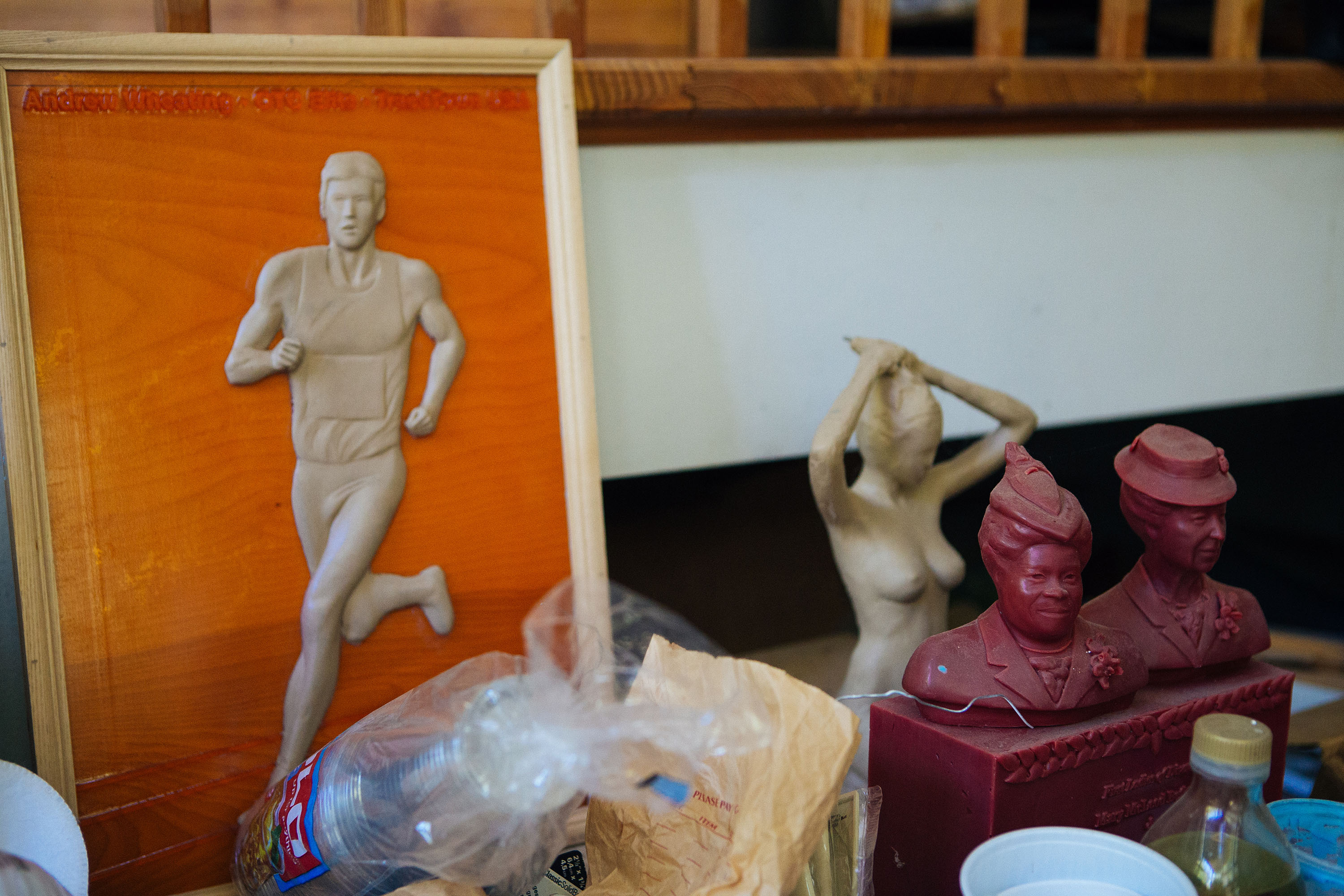

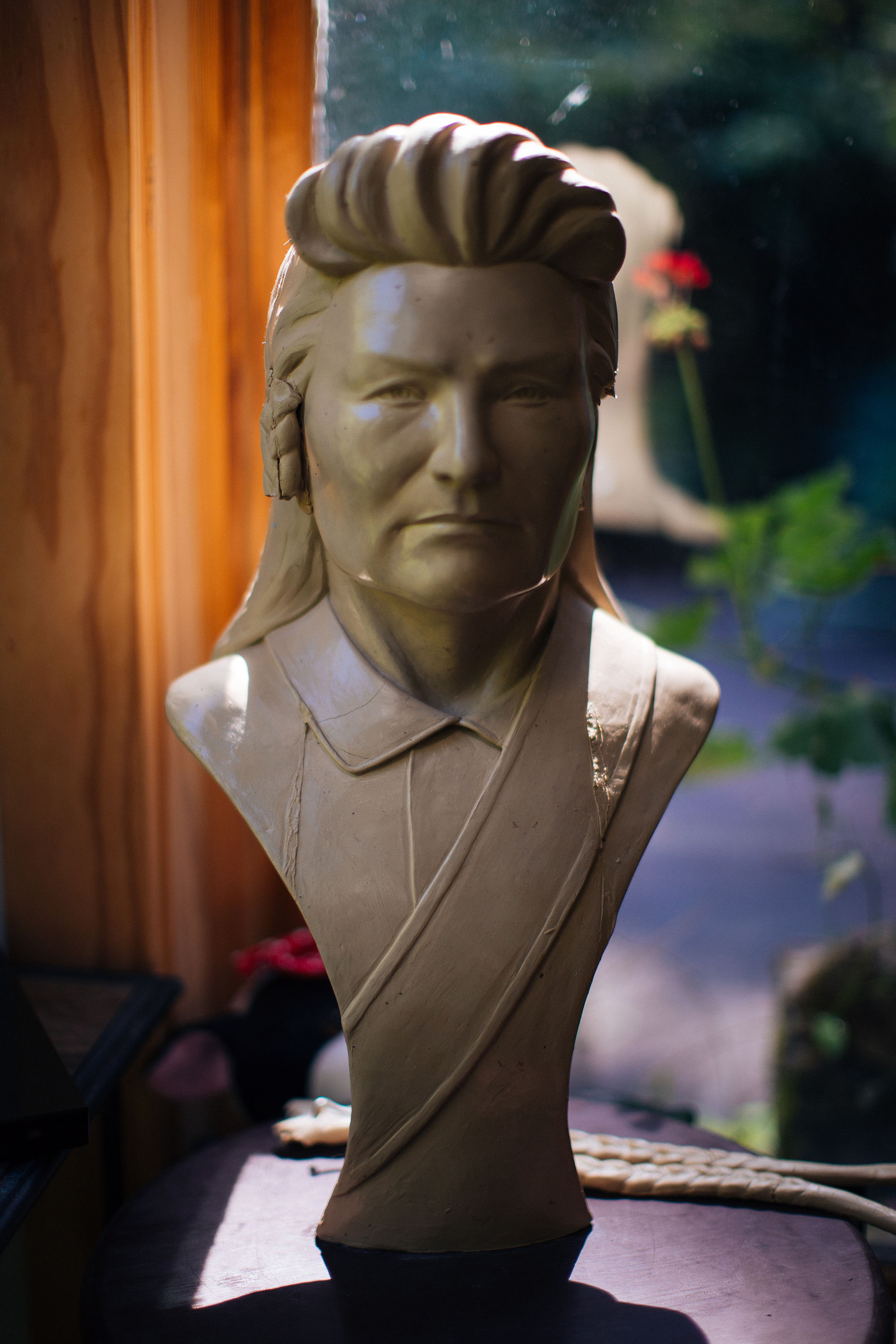
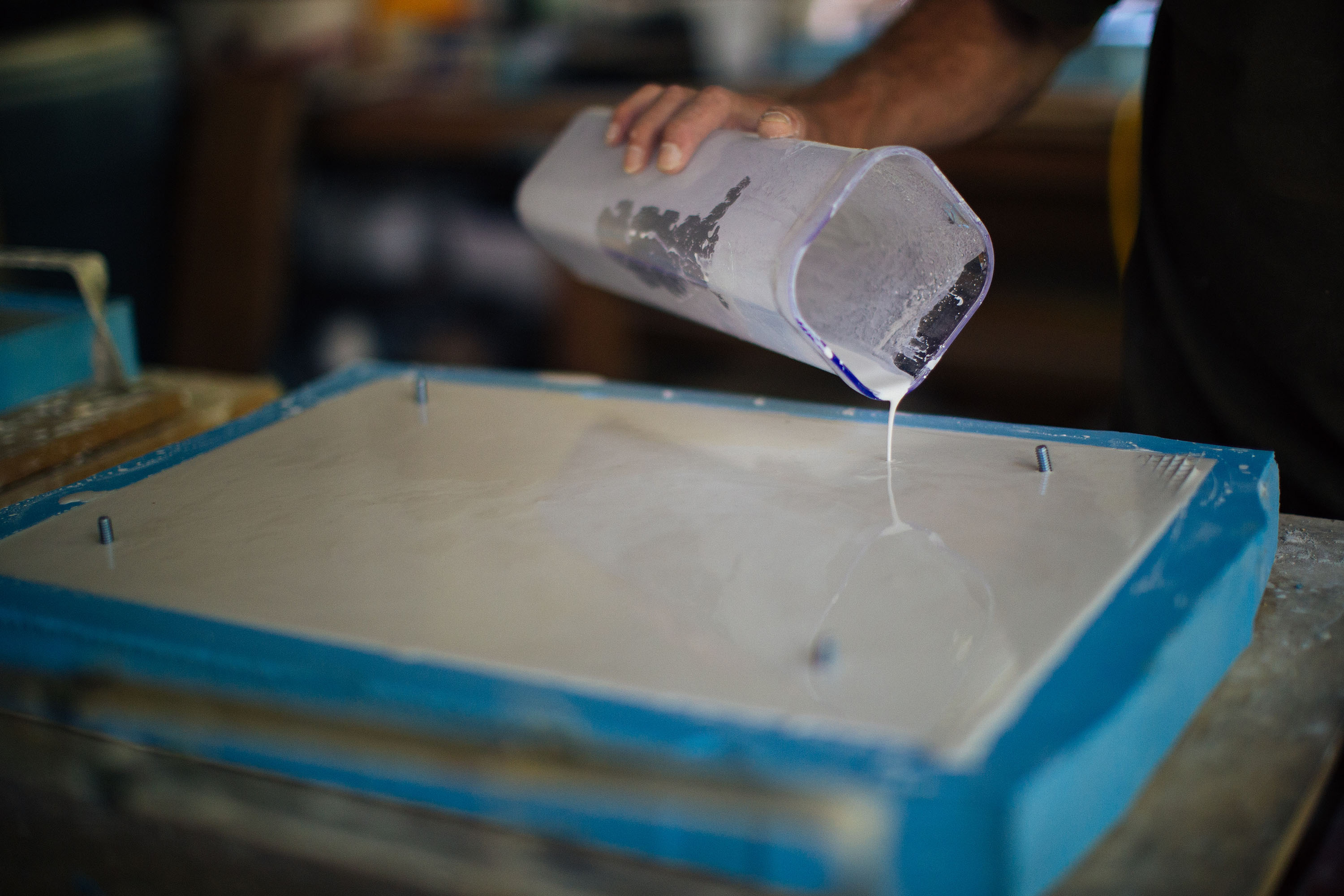
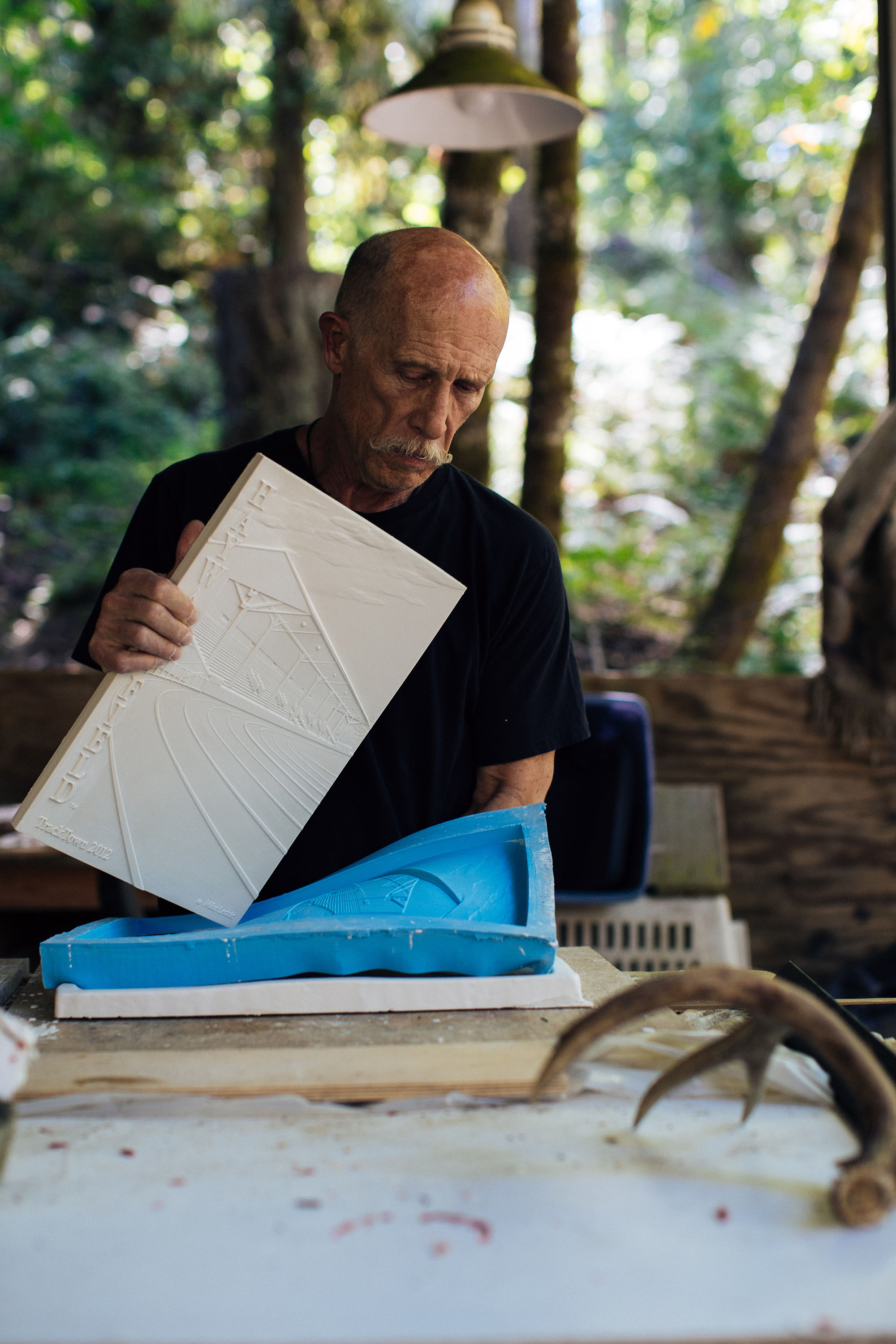
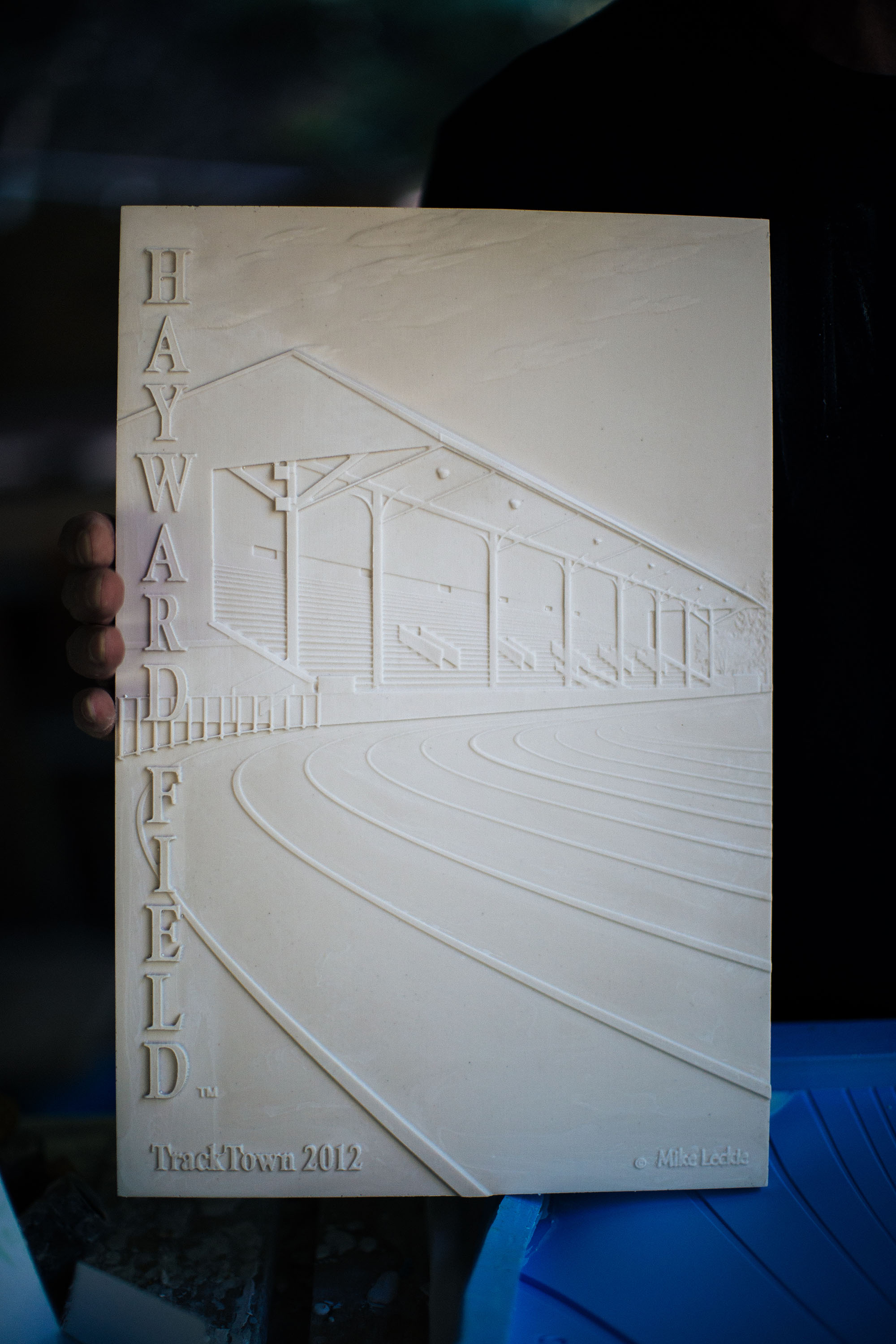

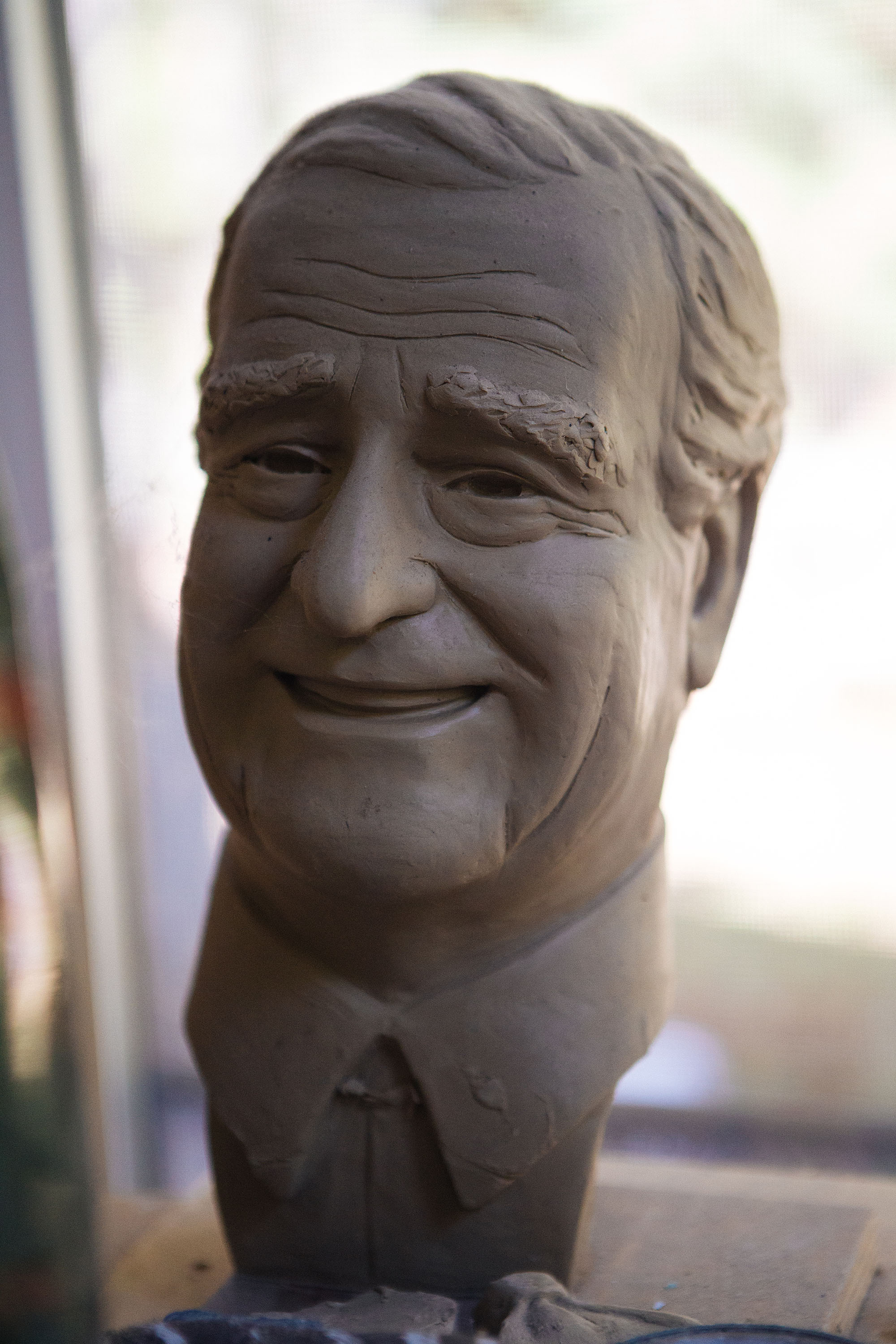
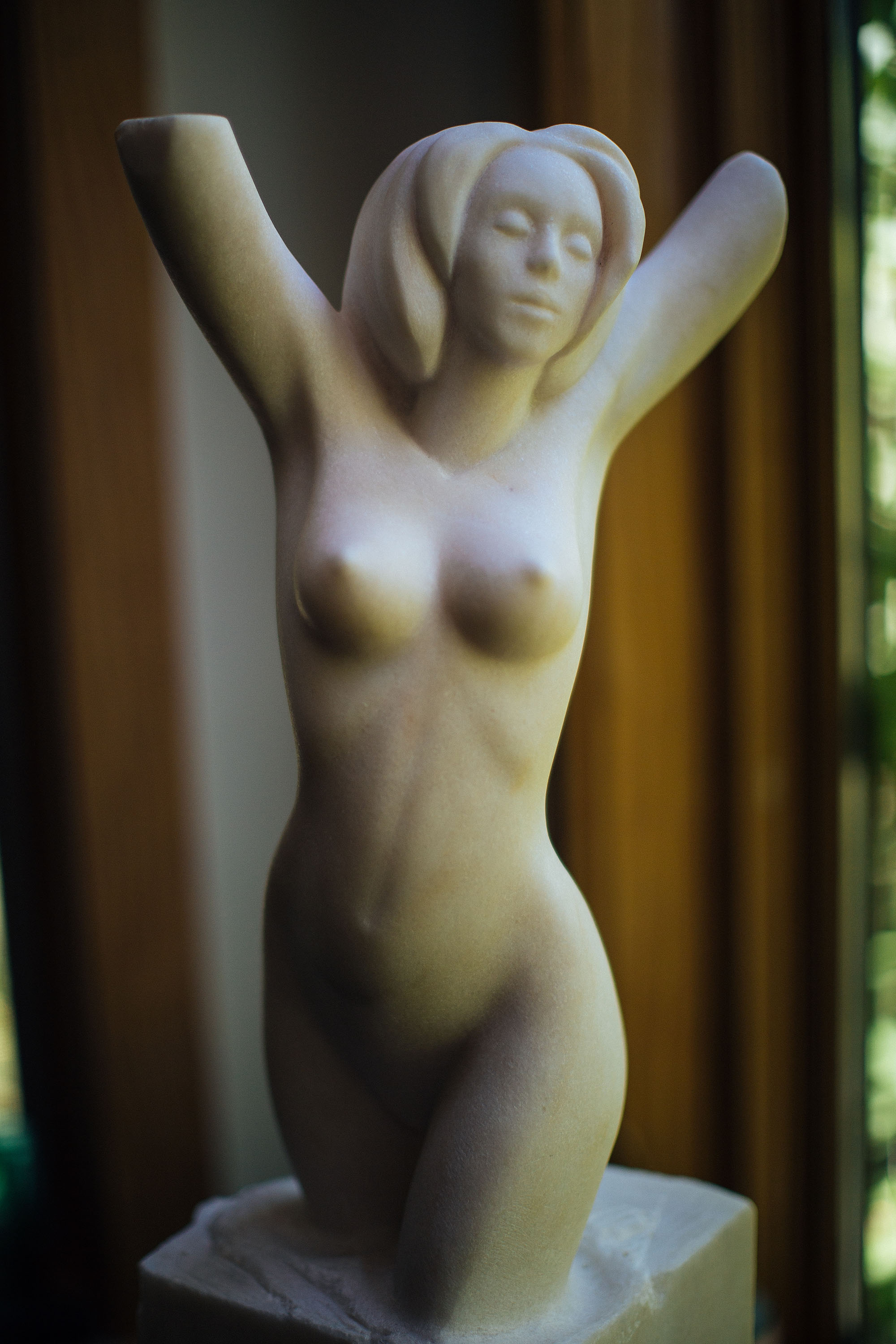
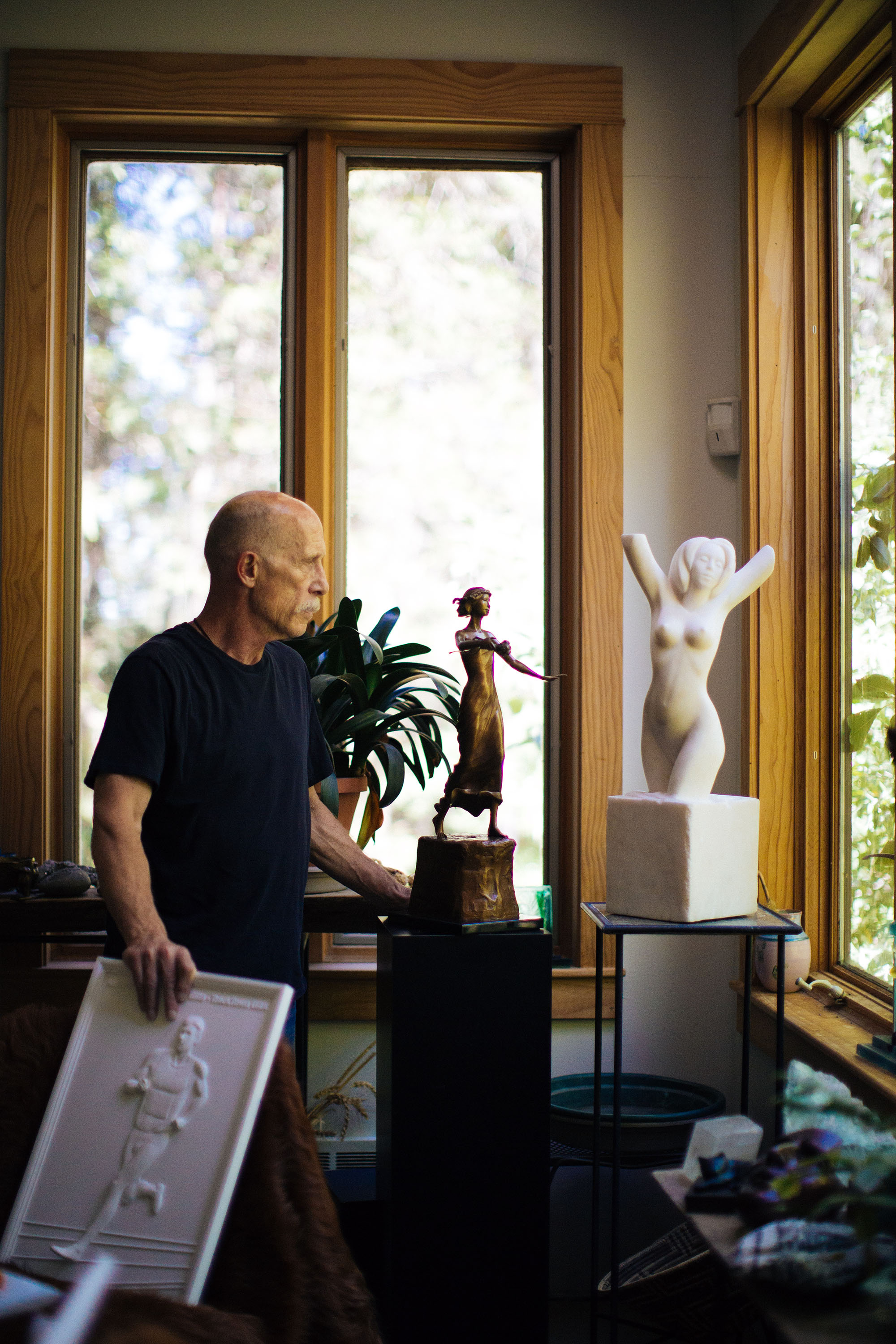
The corners of Leckie’s house in Fox Hollow look like a dragon’s den, with piles of lustrous purple and sea-green chunks of stone everywhere. It’s mostly Chinese fluorite, but there is also green verdite from Zimbabwe and cloudy blue calcite chunks the size of a football.
The mountains of sparkling stone continue up into the kitchen and trail out the side of the house, forming more gleaming heaps of treasure in the carport. The sculptor uses these softer limestone pieces to make smaller figurines.
His latest work-in-progress sits in the middle of his kitchen (almost blocking the sink). It’s a bronze statue of Chief Joseph’s face, half-finished. A bowl of fresh sweet pea blossoms at the base, along with a chocolate bar, as a tribute to the late Native American leader.
Now that the trials are done and the Olympics themselves are underway, Leckie says it’s time to turn his attention to works like Chief Joseph and the many glittering stones waiting to be molded in his home.
See more of Mike Leckie’s work at mikeleckie.com.
